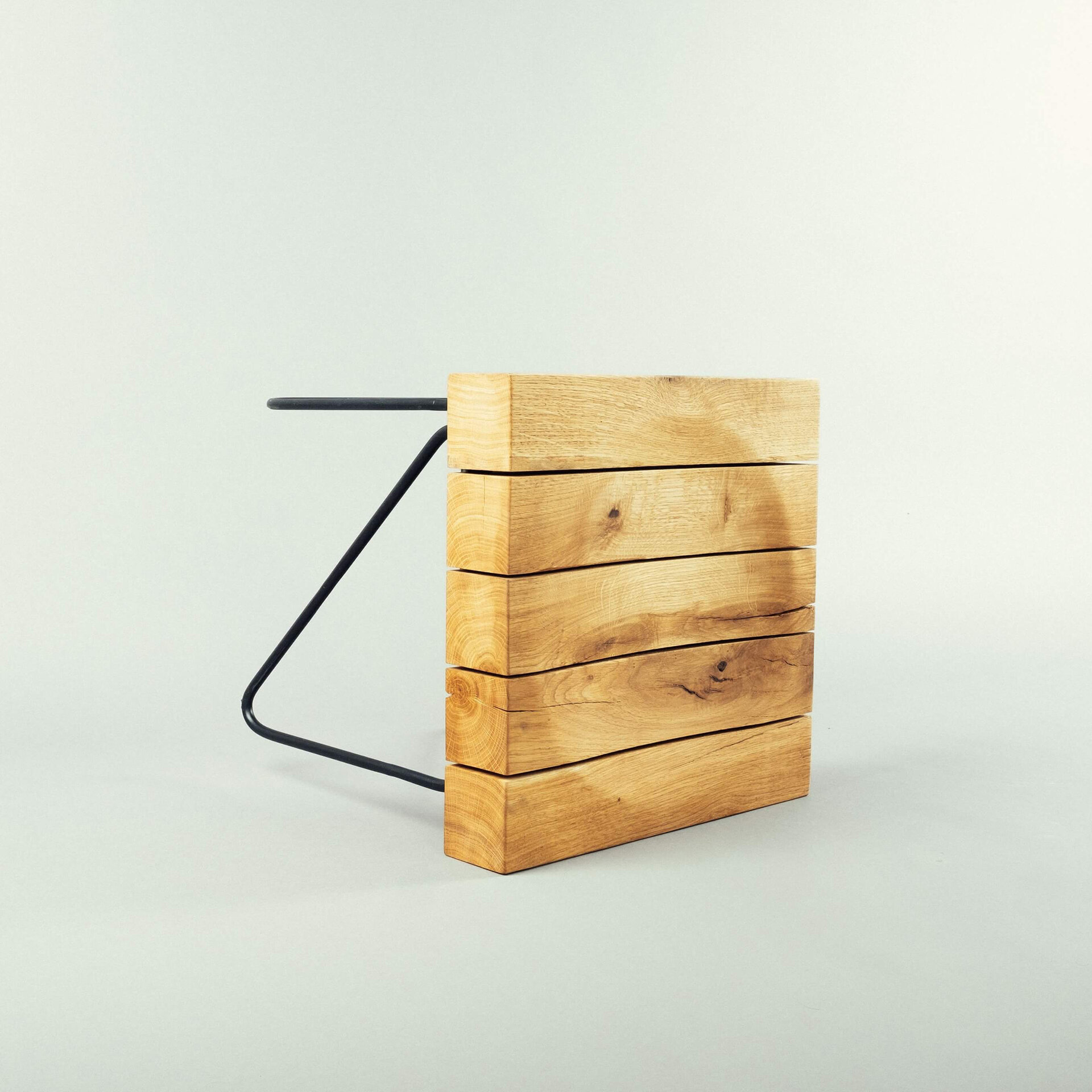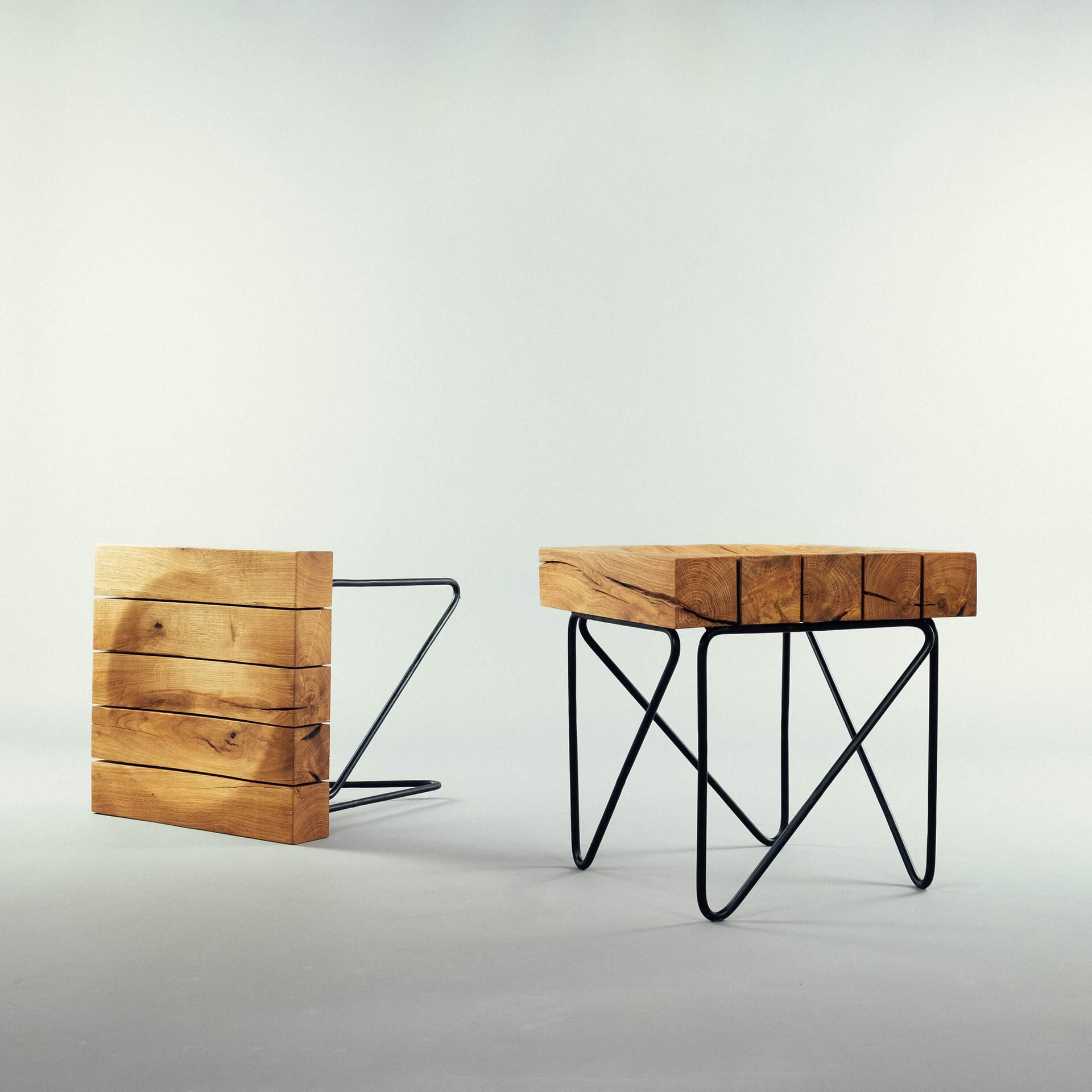
Exterior stool
Authors’ Comment
The freedom of limit is infinite. The achievable limit and the limit to exceed support the idea of projecting the beliefs in the future. Suggesting a limit by suggesting withal its freedom (at the same time) in the form of a single object stands as the origin stool concept. It proposes the illusion of a heavy material being sustained by a frail frame. The history of the upheld wood underlies its importance: two 63 years old oak pillars derived from a disused warehouse have been endowed with a new life. The wood originates from the designer’s family house construction, since 1953 and carries the energy of four generations that enjoyed the space it used to define.
Handcrafting the idea became a participatory and low cost process that benefited from the designer’s father know how and the creator’s imagination and involvement, considered as a better option than assigning the execution to a person outside the project. Considering this, the designer participated to all the phases of the design, assuming and improving it by doing.
The chair seat, an alignment consisting of 5 oak pieces, 45 centimeters long and with a 8.5x8.5 centimeters section, hovers above a metallic frame that defines the space in between them, conferring coherence together with the perception of singular rectangular elements. Composed with the triangular reinforcing steel stands that touch punctually the ground with its tips (tip toes the ground), the stool perfectly fits into a cube. The thin elements that support the massiveness of the wooden platform constitute together the final form that aims to suspend the weight with slender units.
Challenging the natural limit of the two materials stands for the challenge of exceeding the social and spatial barrier of the extreme living environment that people have been facing in the poor communities for years and years. Through quality and participation this limit is intended to be overcome according to the ArhiPera`s paradigm.
The stool got born as a response to the ArhiPera challenge of creating a representative design object for the association's belief: architecture created in a participatory process with modest means and high quality design is able to dissolve the social limit between people living in extreme poverty and society, visibly increasing their life expectancy.
Object Design


